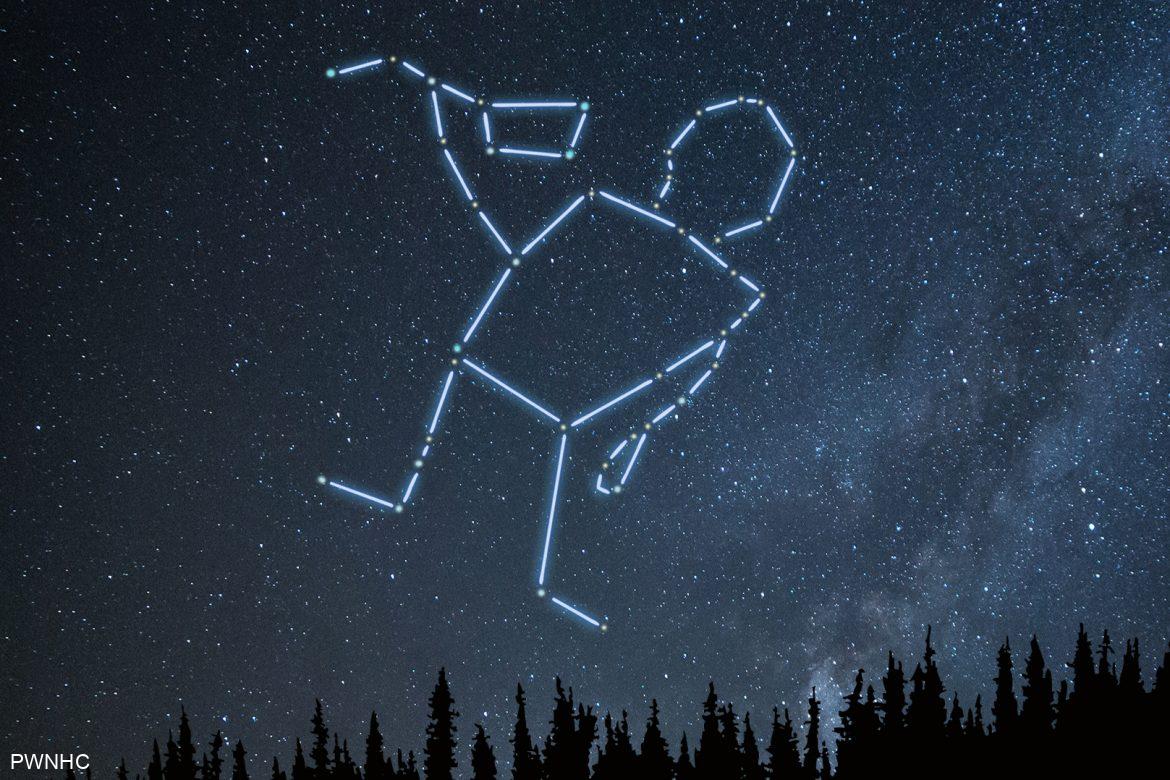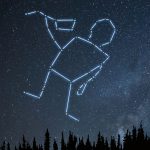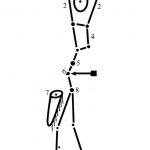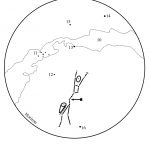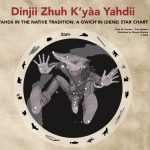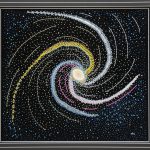Time Immemorial
Dene Night Sky
Indigenous people of the NWT, as other cultures across the world, use the land and sky to find their way across land and waters. For some Northern Dene across Alaska and Northern Canada, the stars reveal more than just directions; they represent an ancient traveler hero – known by versions of the name Yamǫ́rıa, or Yamǫǫ̀zha.
The Dene constellations are not a translation of the names many English speakers know from the Greeks and Romans. They are unique to Dene culture. Dene constellations usually include a humanoid figure known as Yihda, Yahdii, Yehdaa or similar variations of that name. While the Yihda constellation is often used as a Dene translation for what is commonly known as Ursa Major or the Big Dipper, according to traditional knowledge holders, it tells a much bigger story for those who can read it.
Apart from the Big Dipper, however, the Yihda constellation is comprised of very dim stars that are not easily seen by the casual observer. This speaks to the specialized knowledge of very few, like Charlie Neyelle of Délı̨ne, who dedicate their lives to learning how to see, and follow, the stories in the sky.
The story of Yamǫ́rıa and his brother Yamogha, are well known across Denendeh. People continue to tell of their travels, putting things in their rightful places and making the world safe and livable for people. The Milky Way or ɂetene is his trail that circles the world, the Big Dipper is his cooking pot and all the unnamed stars around him tell the stories of what Yámǫréya did on earth.
The night sky version of this great story, however, literally incarnates or makes real the spirit of Yamǫ́rıa. In many ways, Yihda is Yamǫ́rıa in the sky. The significant connection between Yámǫréya on the land and in the sky is important for ways knowing how to act and relating to the world in Dene society.
According to Charlie Neyelle of Délı̨nę:
Yamǫ́rıa got rid of all the giants, all the dinosaurs. And that’s all recorded up there… Yamǫ́rıa settled everything and that’s all up there. So, all these stories, these are his stories, his stories will be sitting in the stars.
Source: Based on the work of Chris Cannon, Department of Cross Cultural Studies, University of Alaska (Fairbanks).
